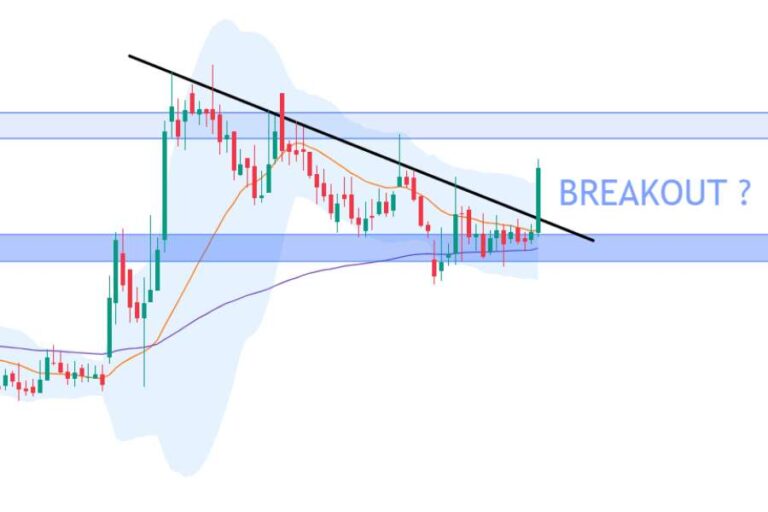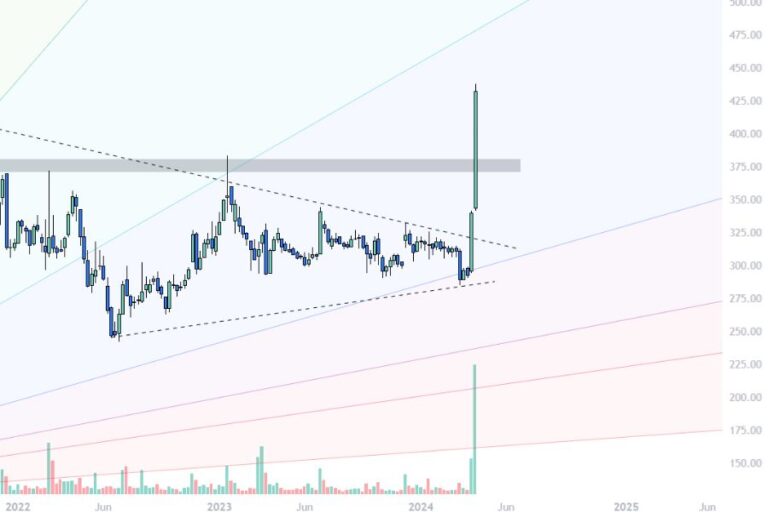
Ambani’s New Company – Now at ₹300, Will give 50% Returns!
Pranay
Contributor
Jio Financial Services (NSE: JIOFIN) got listed on 21st of August 2023 at a price of ₹262 per share. The stock immediately experienced a sell off and it went down by 23% making a low of ₹202.80.
The reason for the sell off can be attributed to a decline in investor confidence regarding the company’s fundamentals. Many investors perceived this new company from the house of Ambani as overvalued.
Additionally, investors were also concerned about the lack of experience of the company in managing financing business, further dampening investor sentiment.
However, in the next three months, shares of JIOFIN were not able to break this low and kept making higher highs. Currently, the stock is trading at ₹306 near its all time high value.
JIOFIN broke out from its listing price in the month of January, and since then the stock has demonstrated a continued bullish up move.
Why shares of JIOFIN is rising
There can be a lot of technical and fundamental reasons that can be attributed to the rise in shares of JIOFIN. Technically, when any company crosses the listing price, it experiences further appreciation in its share price. After crossing the listing price of ₹262, JIOFIN gained nearly 32% in a short span of time.
The company has also worked on their product and conducted tests to check if their product fits the market. They successfully ran trials for their consumer durable loans and personal loans offerings.
In order to expand their portfolio, JIOFIN is also working on a supply chain financing solution which will further increase products in their portfolios. Another reason why investors are buying shares of JIOFIN can be their increasing partnerships with insurance companies.
To compete with top digital payment platforms like PhonePe and PAYTM, JIOFIN has launched their own sound boxes, schemes for merchant loans, etc. All these combined factors may be reasons behind the rise in share price of Jio Finance.
Is JIOFIN valued fairly?
JIOFIN’s price to book value is at 1.7x, when some of its competitors like Bajaj Finance is trading at a P/B of 5x. However, only the P/B ratio should not be a factor for valuing a company.
In the short term, the company can experience a sell off as its price is in overbought zone. However, as India’s economy is rapidly growing, the lending business has set a bright future for itself.
As JIOFIN is a relatively new company, it’s hard for us to talk in detail about its financials. Short term traders can wait for lower levels in order to make a new long entry.
Important Supports for JIOFIN
| Support Level | Price (₹) |
|---|---|
| Support 1 | ₹ 290 |
| Support 2 | ₹ 268 |
| Support 3 | ₹ 250 |
| Support 4 | ₹ 236 |
JIOFIN Income Growth over the years
| Time Period | JIOFIN's Income Growth |
|---|---|
| 1 Year | -71.99% |
| 3 Years | -50.79% |
| 5 Years | -32.46% |
JIOFIN's Profit growth over 5 years
| Time Period | Income Growth |
|---|---|
| 1 Year | -81.4% |
| 3 Years | -48.59% |
| 5 Years | -33.58% |
JIO Finance Shareholders data
| Ownership | Percentage |
|---|---|
| State or Government | 0.642% |
| Individual Insiders | 0.885% |
| Public Companies | 6.11% |
| Institutions | 21.1% |
| General Public | 30.4% |
| Private Companies | 40.8% |
JIOFIN ROE in last 5 years
| Time Period | ROE% |
|---|---|
| 1 Year | 0.31% |
| 3 Years | 4.77% |
| 5 Years | 1.18% |
Final Words
JIOFIN, though their business is not as established as some of its competitors, hold great growth potential. Lending business, specially to MSME’s is a large untapped market. Small and medium scale enterprises can benefit a lot from JIOFIN’s supply chain financing, where such finance companies can increase efficiencies for these businesses.
As investors, its important to study JIO FINANCE’s fundamentals from time to time, to make sure that the company is able to increase its business while also able to generate profits. Lastly, if you are long term investors, these long term targets for JIOFIN might be helpful.
Share this insight
Spread the Alpha
If this analysis helped you, pass it along to your trading desk or community.
Related Articles
More ideas that align with your trading playbook.

Amber Enterprises (BSE: 540902): Bullish Flag Pattern— Is the Upward Momentum Set to Continue?
Amber Enterprises (NSE:AMBER) (BSE:540902) is a small cap stock with MCAP of 15,364 crores and operates in the consumer durable sector. The…

Breakout stock for Swing Trade – Garware Technical Fibres (NSE:GARFIBRES)
Garware Technical Fibres Ltd. (NSE:GARFIBRES) (BSE:509557) works in the textile domain and is a leading manufacturer of technical fibres like fishing and…

Hindustan zinc rises before earning concall, Should you hold?
Hindustan Zinc which is listed on NSE under ticket (NSE:HINDZINC) marked a new all time high on April 12, 2024. The stock…




Your writing style is so engaging and easy to follow I find myself reading through each post without even realizing I’ve reached the end